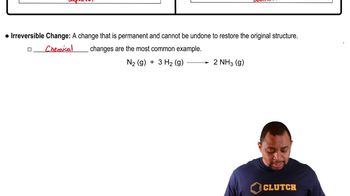Does entropy increase or decrease in the following processes?
c. 2 SO2(g) + O2(g) → 2 SO3(g)
 Verified step by step guidance
Verified step by step guidance Verified video answer for a similar problem:
Verified video answer for a similar problem:



 0:54m
0:54mMaster Entropy (Simplified) Concept 1 with a bite sized video explanation from Jules
Start learning